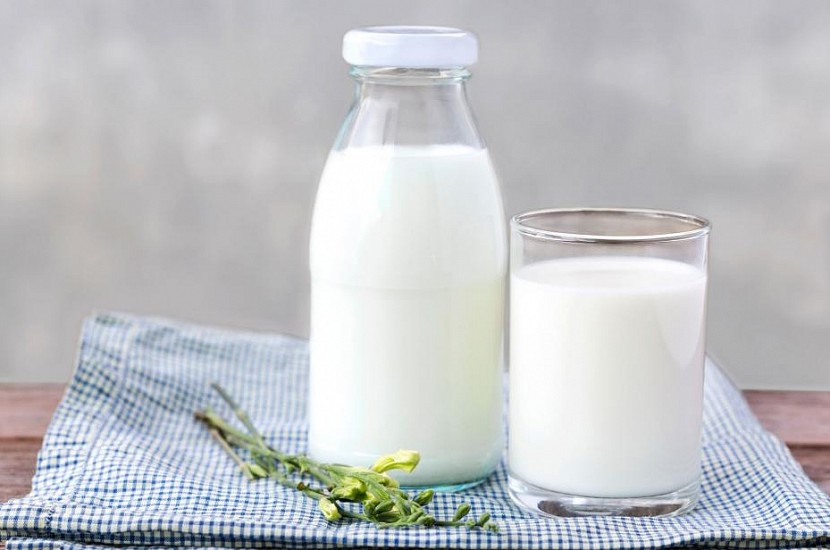CoBank predicts dairy margins will improve in 2022

CoBank is predicting that milk supplies in the U.S. and around the world will tighten in 2022 as dairy farmers reduce herd sizes in response to declining margins.
According to Tanner Ehmke, lead industry analyst at CoBank, European and New Zealand milk production, in particular, will continue to face headwinds, with stricter environmental regulations discouraging any growth in cow numbers.
“With the global economy widely expected to continue its recovery from COVID-19 and global consumers adding more protein to their diets, demand for dairy products around the world will continue to grow, particularly in high-growth regions like Southeast Asia,” Ehmke says. “However, the U.S. Phase 1 trade deal with China is set to expire at year-end, and China could steer its purchases toward our main export competitors — New Zealand and the European Union.”
Rising labor costs
Ehmke says high costs for labor, construction and freight will limit upside margin potential and dampen milk production growth. Faced with tightness in farm labor, U.S. dairy producers increasingly will be evaluating robotics and automation on the farm.
“The potential for continuing drought in the Western U.S., made more likely by the current La Niña conditions, will tighten feed availability for producers in the West — an additional incentive for dairies in the region to relocate further inland, specifically to the Midwest and Plains states,” he notes.
For dairy processors, increasing milk costs, inflation driving up operating costs and reduced labor availability will mean some processors get squeezed, particularly those manufacturing commodity dairy products. According to Ehmke, the significant expansion of capacity in cheese production in the past year — with more capacity coming on line in 2022 — will reduce milk supplies available for other categories, particularly for Class II (ice cream and yogurt) and Class IV (butter and powder) users.
“Port congestion and a shortage of available outbound containers will remain as headwinds for U.S. dairy exporters for much of 2022,” he says. “Ongoing logistical snarls, resulting in higher detention and demurrage costs and declining market share in Asian markets, will pressure U.S. dairy companies. International customers are already switching dairy purchases to Europe and New Zealand origin — a trend that is likely to accelerate in 2022.”
A continuation of the strengthening dollar could also hinder U.S. dairy exports in 2022. However, domestic consumption of dairy products will be more resilient as consumer demand increases both at and away from home, Ehmke says.
“Consumers armed with ample savings accounts and improved job prospects from a growing U.S. economy will drive further increases in dairy consumption in 2022,” he explains. “The cross-current of resilient domestic and global demand for dairy products with the slowing growth in milk supplies should give additional upward lift to milk prices in 2022. Combined with softer feed costs following big corn and soybean harvests, producer margins will finally improve.”
The economy is predicted to continue to grow in 2022. But inflation is driving up gasoline prices, home heating fuel prices, and the cost of food and other consumer goods, and will reduce consumer spending power. Barring any setback to restaurants, in-person learning in schools and colleges, and attendance at public events, increased cheese sales should boost overall milk sales.
Labor shortages are prevalent, Ehmke says, and a lack of truck drivers and milk plant operators is creating challenges across the supply chain. “At the ports, congestion is interrupting dairy exports and causing a buildup of inventories,” he adds.
Even as challenges abound, according to USDA, demand for U.S. dairy products for both domestic as well as international buyers remains robust. Class I demand has subsided from last fall when schools opened, boosting the need for fluid milk; however, demand for fluid milk remains significantly elevated above 2020. The growth in milk production for 2022, according to USDA, may be just 1.2% over 2021.
Read also
Wheat in Southern Brazil Impacted by Dry Weather and Frosts
Oilseed Industry. Leaders and Strategies in the Times of a Great Change
Black Sea & Danube Region: Oilseed and Vegoil Markets Within Ongoing Transfor...
Serbia. The drought will cause extremely high losses for farmers this year
2023/24 Safrinha Corn in Brazil 91% Harvested
Write to us
Our manager will contact you soon



